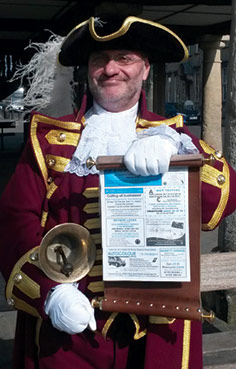Local Information
Our distribution area covers a swathe of beautiful North Wiltshire, a region steeped in history and studded with attractive towns and villages.
Check back as we add more information on our area!
Royal Wootton Bassett
Royal Wootton Bassett boasts a recorded history of over 1300 years. In 681 AD, a Malmesbury Abbey charter refers to Wodeton – the town in the woods. The original settlement was probably in the Dunnington Road area at the south end of the modern town, but moved uphill to its current site after it was sacked by the Danes in 1015. By the time of the Domesday Book in 1086, Wodeton had become Wootton Bassett.
The town gained royal patronage in 2011, as a vote of thanks for the support residents gave to the armed forces. It is one of only three towns in England to bear the title ‘Royal.’
At the time of the last census, Royal Wootton Bassett had a population of just over 11,000. With the M4 lying a few miles north, commuters working in Swindon, Bath, Bristol and Chippenham have made their homes in the town.
Lyneham
Lyneham (population 5,500) lies four miles south-west of Royal Wootton Bassett. For most people, the village’s name is inextricably linked with the armed forces. RAF Lyneham opened in 1940 and became the Royal Air Force’s main transport hub until its closure in 2012. However, the base is currently being redeveloped to accommodate the British Army’s Defence Technical Training Change Programme. When opened, there will be around 2,000 military and civilian personnel posted there.
Bradenstoke
The village of Bradenstoke lies about 1½ miles northwest of Lyneham. The village consists of about 100 houses, plus over 90 homes on two park home sites. An additional 120 homes occupy the Lillybrook park home site, between Bradenstoke and Lyneham. Bradenstoke (once Bradenstoke cum Clack) is notable for the remains of an Augustinian Priory built in 1142. The priory was dismantled in 1930 by newspaper magnate William Randolph Hearst (the inspiration for Citizen Kane), and used to refurbish the interior of St Donat’s Castle in Glamorgan. He had purchased the castle for his mistress, film star Marion Davies.
Clyffe Pypard
Clyffe Pypard (population 289) is just over three miles south of Royal Wootton Bassett. It was home to RAF Clyffe Pypard during World War II, closing in 1947. This heritage is reflected in the aviation-themed pub The Goddard Arms in the village. The prominent Goddard family owned the Pypard estate for 400 years and resided at the Manor House. The village includes attractive timber framed cottages with half-hipped thatched roofs, some dating from the 17th century.
Goatacre
Goatacre is situated a mile or so south of Lyneham. The curious name means exactly what it sounds like – Goat Acre – and derives from the Old English gat-aecer. Goatacre is notable for its thriving cricket club which has had several spectacular successes. The village is easily accessible by the A3102, which divides it from the hamlet of New Zealand.
Broad Town
In 1998, a bronze-age axe was found in the garden of Laurel Cottage, Broad Town. The artefact demonstrated that the Broad Town site has been inhabited for at least 3800 years. Not surprisingly, an archaeological project has been investigating the village and the environs. It is expected to deliver a final report in 2015-16. The village (population 574) has a lively social club and is perhaps best known for its white horse, measuring 78 by 57 feet.
Tockenham
The village lies three miles to the north of Royal Wootton Bassett. The village was featured on national television when the archaeological series Time Team excavated a Roman villa constructed in the 2nd-4th Century AD. Tockenham Manor, a listed building since 1955, dates to the early 1600s, and other village buildings are several centuries old. Community life for the approximately 238 inhabitants centres on the village hall and St Giles church.

Town Crier Owen Collier helps to spread the word about The Advertiser.



